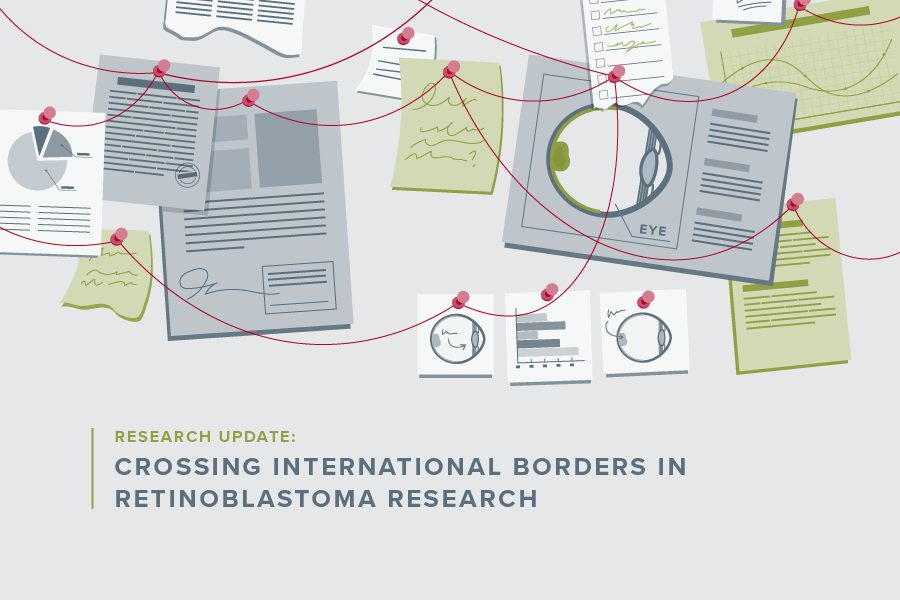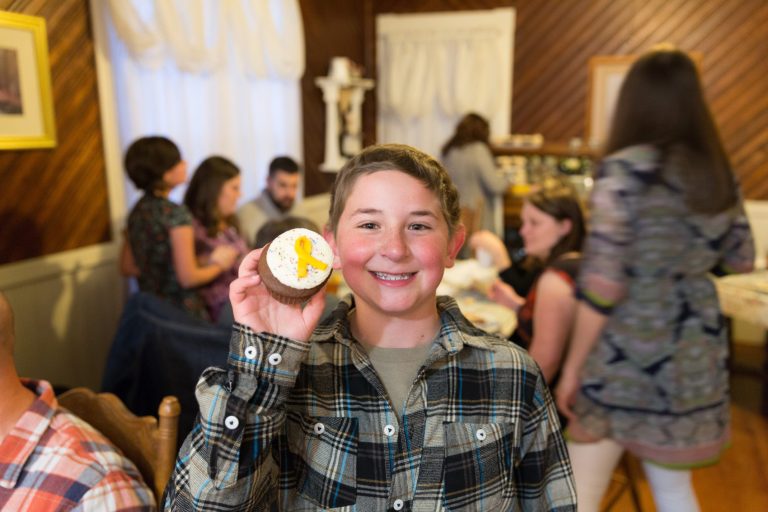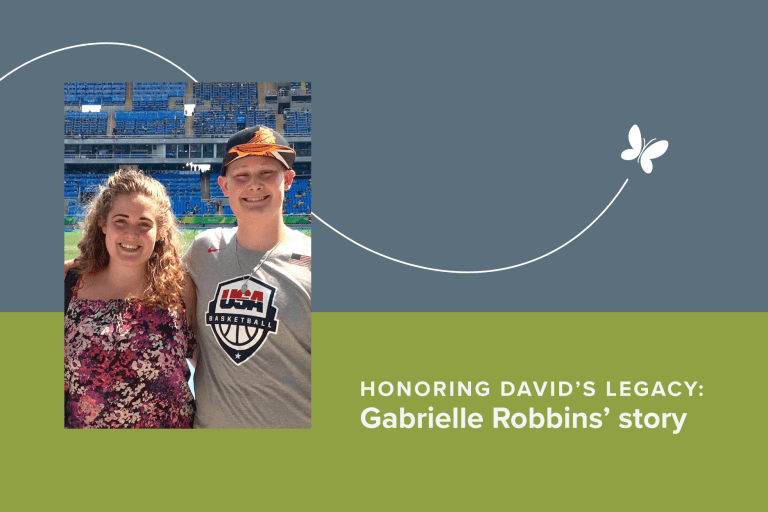A rare cancer means more than “occurring less often.”
For kids, rare means fewer doctors understand how to treat their disease, it’s difficult to find and develop better treatments, and hard to track outcomes. This is especially true for retinoblastoma, an eye cancer which affects 200 to 300 kids each year in the United States.
In the U.S. and other high-income countries, retinoblastoma is usually cured, but treatment can leave a child who survives with significant visual impairment and facial deformities. Survivors are often at risk for secondary cancers caused by the treatment. In low income countries, where most retinoblastoma cases happen and many go undiagnosed, children often die of this disease.
The Pediatric Cancer Data Commons (PCDC) at the University of Chicago, funded in part by Children’s Cancer Research Fund, aims to create a clearer picture of retinoblastoma by gathering and harmonizing cohesive data sets through a world-wide initiative called Global REACH.
Though this sounds abstract, gathering and analyzing data is the low-hanging fruit that could change the way researchers study and treat retinoblastoma (along with many other childhood cancers.)
Think of it like a picture board in a crime show. Like crime investigators, each cancer researcher provides information – snapshots that include patient information, (genetic) fingerprints, and family relationships -- telling us about the culprit – retinoblastoma. With more and more clues, we can get a fuller idea of what will work to catch it earlier, and how to treat it the right way to defeat it.
Right now, researchers from around the world each have a small collection of clues. Global REACH works to gather these snapshots and clues and make them into a large connected mural of retinoblastoma, one that everyone can see, access and understand clearly.
Lowering the barriers to research will allow access to the largest set of data ever collected from children with retinoblastoma.
Together, these snapshots can provide researchers answers to questions like: Is it necessary to take this child’s eyes out completely? What treatments will work best for this tumor’s genetic makeup? Could we use a lower dose of chemotherapy?
For more on retinoblastoma, read Patrick's Story - Cancer, Part Two.
Treatment varies widely from irradiating the eyes to outright removing them to chemotherapy. And, unlike other cancers, retinoblastoma is usually not biopsied and is often treated outside of cancer centers. This means data are often not tracked like other cancers. All these factors make it difficult to accurately aggregate and measure how much progress researchers are making.
“[Data] could help researchers develop hypotheses about the biology of the tumor, or to know which therapy may or may not work,” said Lisa Diller, MD, PCDC member and Vice Chair of Pediatric Oncology at Dana-Farber Cancer Institute. “It could help drive medical decision-making...It could help us to know what kind of chemotherapy to use, and when to use it.”
At the end of this expansive effort, Global REACH hopes to put the data into “one universe,” with a robust web-based system including charts, visualizations and easy searchability. Programs could even match kids to available clinical trials or case files of kids with similar tumors.
Dr. Diller said many doctors currently rely on knowledge collected from patients they have treated themselves, or from information from the medical literature, with small numbers of children reported.
With the efforts of the PCDC and Global REACH casting a global net, Sam Volchenboum, MD, PhD, MS and Director of the PCDC at the University of Chicago said they could add hundreds, even thousands more retinoblastoma patients to the data pool.
“Bringing together such a large collection of data from children with retinoblastoma will power new types of research not possible with smaller sets of data,” said Dr. Volchenboum. “I’m very excited about the new discoveries that can be made with these new, aggregated data.”
Already, the PCDC has successfully gathered, harmonized and analyzed data for germ cell tumors, soft sarcoma tumors and neuroblastoma resulting in over 50 peer-reviewed manuscripts.
The proven track-record demonstrates a profound impact on retinoblastoma, potentially helping empower parents to make informed quality-of-life decisions for their kids.
“Parents are willing and wanting to weigh in on their choices,” said Dr. Diller. “For example [with rich data], a parent may choose to have their child’s eye taken out instead of risking a secondary cancer through radiation.”
Before we can get to hard-hitting answers, Dr. Volchenboum said the PCDC will coordinate efforts to develop a global consensus data dictionary for retinoblastoma. They will also continue to engage with global leaders to make it possible for researchers to more easily share and harmonize their data across international borders.
“This work requires coordination between many different areas - technical, regulatory, legal, clinical, analytics - and requires the kind of support that CCRF is providing,” said Dr. Volchenboum.
Currently, Global REACH includes eight countries: Argentina, Brazil, Chile, Uruguay, Canada, Israel, Switzerland, and the Netherlands. “As the word gets out about our consortium and growing platform, we expect other countries to get involved as well,” he said.
Pediatric cancer is rare, but the impact of getting it right is enormous,” said Dr. Diller. “If you cure a child, they have a lifetime ahead of them.”
Your donations make progress possible.
When you donate to Children's Cancer Research Fund, you make it possible for researchers to uncover how to better prevent and treat childhood cancers. Every $1 donated helps researchers secure $18 in additional funding to make groundbreaking discoveries.




